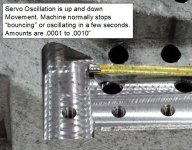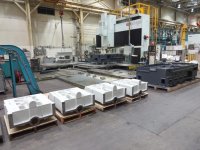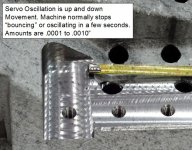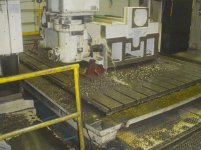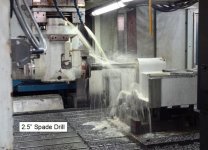DMF_TomB
Diamond
- Joined
- Dec 13, 2008
- Location
- Rochester, NY, USA
anybody ever change max rapid feed rate using parameter change ? bigger machine tends to bounce back and forth with servos and hydraulic pressure when stopping from max rapid feed rates. i am considering slowing rapids with parameter change.
.
since it can always be changed back i would be interested if it helps at times. sure i can always turn rapids to 50% but this way even if another operator got rapids at 100% cnc would still not go above certain max feed even in rapid mode
.
since it can always be changed back i would be interested if it helps at times. sure i can always turn rapids to 50% but this way even if another operator got rapids at 100% cnc would still not go above certain max feed even in rapid mode


